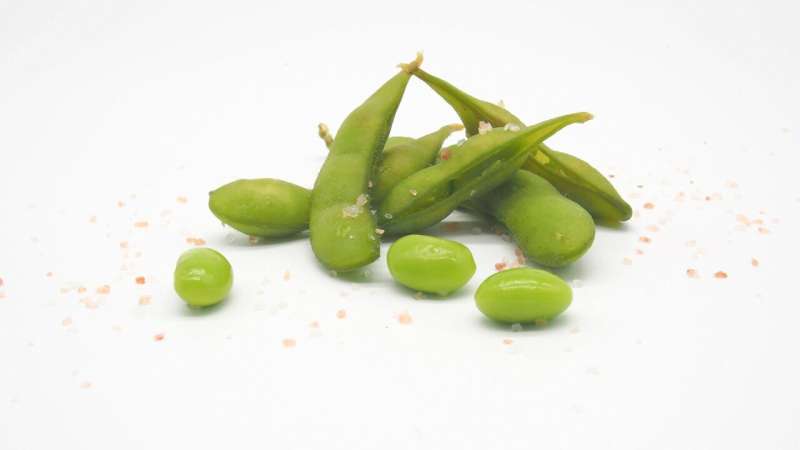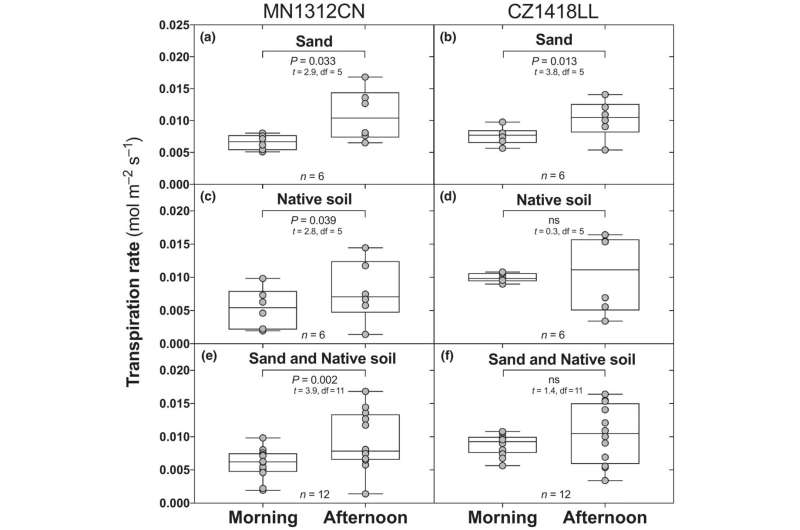This article has been reviewed according to Science X's editorial process and policies. Editors have highlighted the following attributes while ensuring the content's credibility:
fact-checked
peer-reviewed publication
trusted source
proofread
Soybean crops can take advantage of climate change to increase productivity

As the climate continues to warm, atmospheric drying—the reduction of the amount of water the air can hold—is becoming a major concern for crop producers around the world. Atmospheric drying is typically associated with crop productivity declines. However, new research from the University of Minnesota suggests that legumes, including soybeans, can actually be more productive with atmospheric drying conditions, so long as the crops are sufficiently irrigated.
Research recently published in the journal New Phytologist shows that rising vapor pressure deficit, which is the driving force behind atmospheric dying, would actually benefit biological nitrogen fixation, a process that moves nitrogen from the air into the plant through its roots. This process is essential for plant health and productivity.
The research team includes Walid Sadok, an associate professor in the Department of Agronomy and Plant Genetics; Daniel Monnens, a graduate student in the Department of Agronomy and Plant Genetics; and R. Ford Denison, an adjunct professor in the College of Biological Sciences.
The researchers found:
- Under well-watered conditions, nitrogen fixation increased as atmospheric drying increased.
- This effect was due to atmospheric drying triggering an increase in the plant transpiration rate, which causes water moving inside the plants to be removed more aggressively away from the roots.
- This is hypothesized to lead to transporting nitrogen fixation inhibiting compounds away from the root nodules, which is the site where nitrogen fixation occurs.
- This process alone might lead to decreases in productivity because higher transpiration rates might create or aggravate pre-existing soil moisture deficits. However, in the case of soybean crops, higher transpiration rates also seem to reduce nitrogen fixation feedback inhibition, thereby causing productivity to increase, if the plant remains well-watered.

"A result like this indicates that we can potentially breed towards new climate-smart soybean varieties that actually take advantage of this atmospheric drying phenomenon to boost their nitrogen fixation ability and increase yields or their resilience," said Sadok.
"We know that legumes are particularly important for agricultural sustainability because they perform this amazing trick of using atmospheric nitrogen instead of needing to rely on synthetic fertilizers. Such next-generation varieties could not only increase productivity but maybe even reduce the need for using nitrogen fertilizers," said Monnens.
More information: Daniel Monnens et al, Rising vapor‐pressure deficit increases nitrogen fixation in a legume crop, New Phytologist (2023). DOI: 10.1111/nph.18929
Journal information: New Phytologist
Provided by University of Minnesota





















